It has now well accepted that the generation of fifties turning dive bezels heralded from the development of aviation watches twenty years prior. Longines can claim many firsts, and they can certainly lay claim to the very first tool wristwatch with a scaled rotating bezel, and P.V.H Weems himself was an integral and instrumental part in the development of it. In fact, Longines owns the top three slots, and their bezels turned first & second and third.
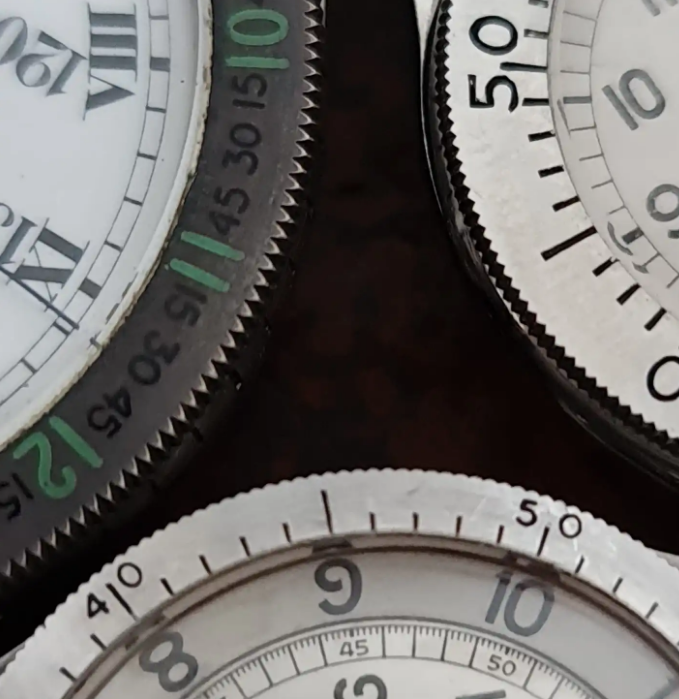
It has generally been accepted and promoted that the so-called Weems model itself is the very first watch with a calibrated turning bezel. The Weems illustration 5145705 sometimes associated with the 1929 patent application appears to be an illustration of Longines ref 3931 which first arrived in the market in 1935. However, whilst this this may appear largely the same and may in fact be the precursor of this reference, it is a small anomaly in the Longines history of the smaller new Second-setting Weems models.
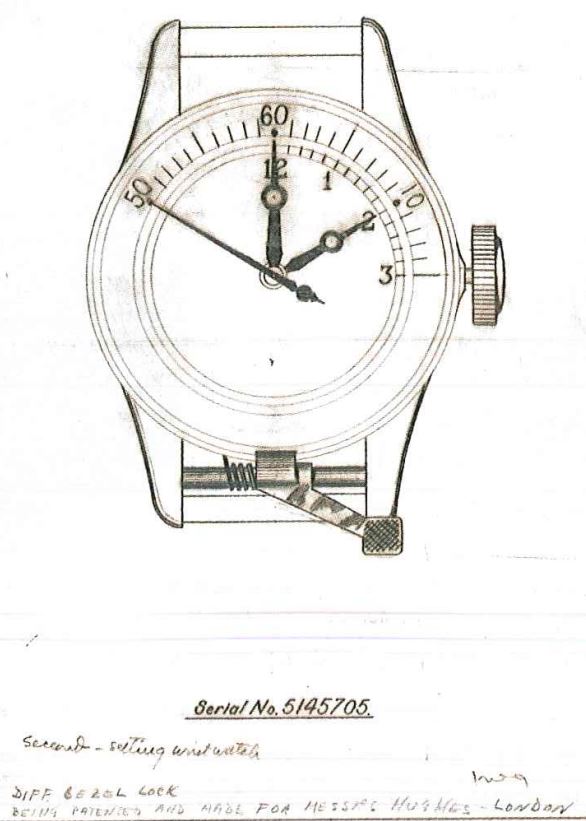
Longines archives note delivery of an all-silver watch serial with 5145705 to Wittnauer on February 22nd, 1932. The smaller Weems cased watch featured a turning bezel, calibre 12.91, and their archives note the watch being completed on December 28, 1931. It is now known that master technician, Harry Nash, of San Diego Jessops fame, modified a few Waltham Vanguard pieces for Weems himself around 1927/8. Recent discoveries also confirm that Lindbergh had at least two of these. A seemingly unused one rests in the Smithsonian and a used one lies with the Missouri Museum.
The delivery information detailed at the bottom of the illustration appears to be Messrs (Henry) Hughes & Son in London, who were a firm specializing in making marine and aeronautical navigational instruments.
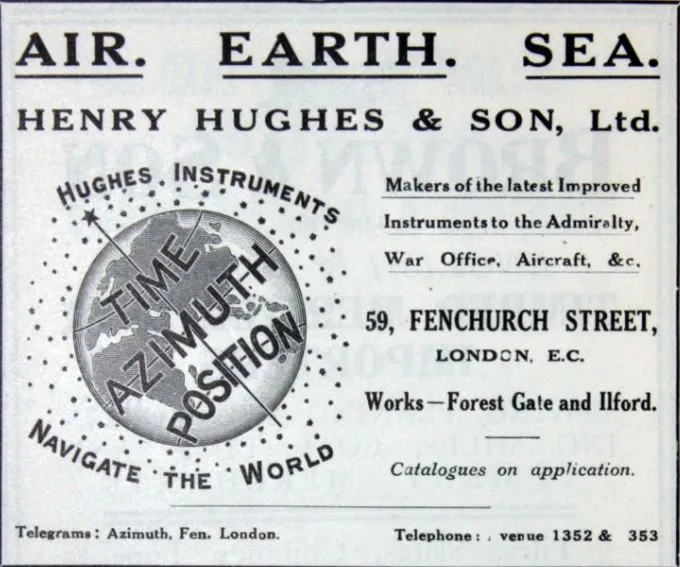
It is known Weems original sextant, branded HUSUN, came from this very firm and that he shared a business and personal relationship with the firm. It appears this first New Second-setting prototype piece modified a Longines Weems turning bezel watch by adding a locking lever.
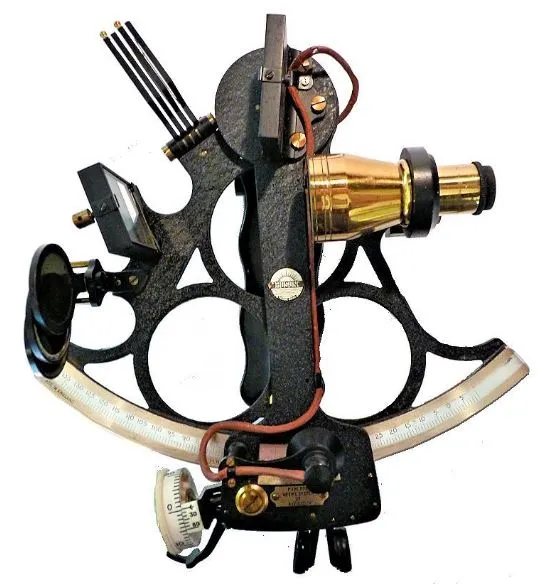
The addition of a thumb lock for the bezel was undertaken by Henry Nash of Jessops fame and made for Messrs (Henry) Hughes & Son in 1932. It is likely this illustration, or a derivative thereof, that was later developed into the Longines Weems ref 3931 model which first appeared in 1935 to the market.
Whilst the new second watch was one of the first bezel iterations, with the external bezel allowing the second hand to be set, there are a number of reasons why the Lindbergh Hour-angle model which improved upon the large 47mm Weems Second-setting watch can lay claim this title. Whilst both the Weems and Lindbergh share a very similar genetic code, the first large Longines Weems prototype in a 47mm case was born on 30 November 1928. However, the original large version of the watch, was only ever produced by Longines and was only ever delivered with a turning inner chapter for the life of the watch.

Reference by some authors is made to Weems US patent 2008734 which was first lodged in July 1929 for attesting to the Weems being the first model with a bezel. It should be stated that the patent itself involves a very complex, technical illustration of a multi-dialed, dual movement, creation by a technical genius allowing for time synchronization.
The patent application most likely relates to the Waltham Weems second setting watches delivered pre Longines. There is no mention of a turning bezel within this US patent, however, the “scope and intent” clause as described in the patent may have enabled Weems to see the US patent number featured on some Longines Weems models.
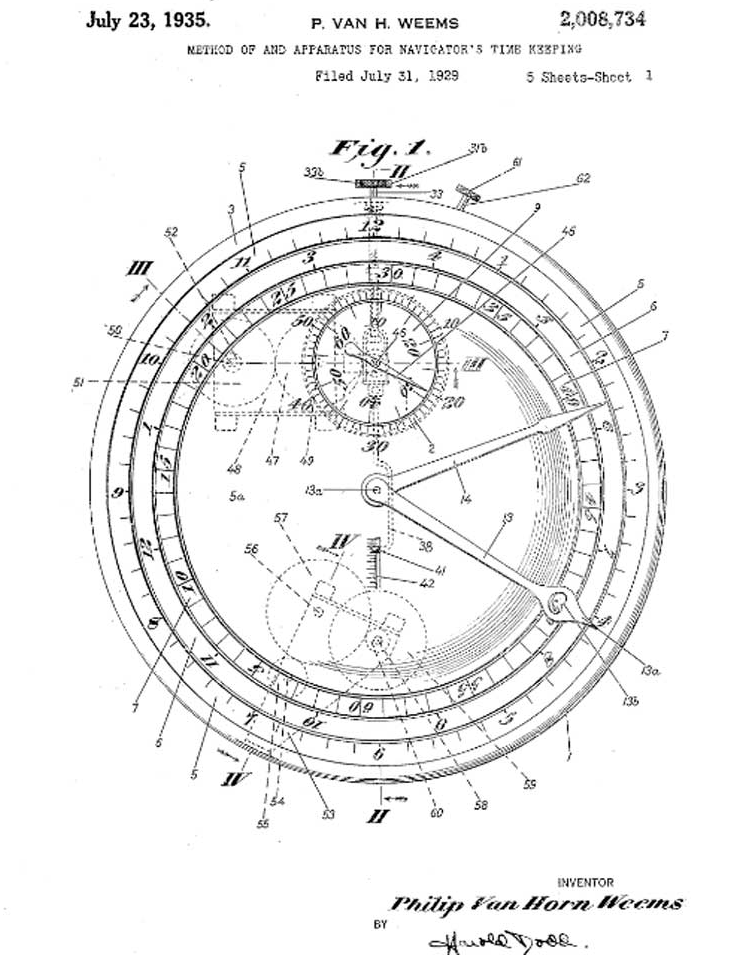
The first edition of Weems Air Navigation book published in 1931 has “Lucy” in horological anthropological flight watch terms. Lindbergh’s modified Hour-angle / Weems hybrid watch marked up with units of the arc on the dial. The watch itself was part of the first production batch of Weems delivered to Wittnauer in the months of April and May 1930.
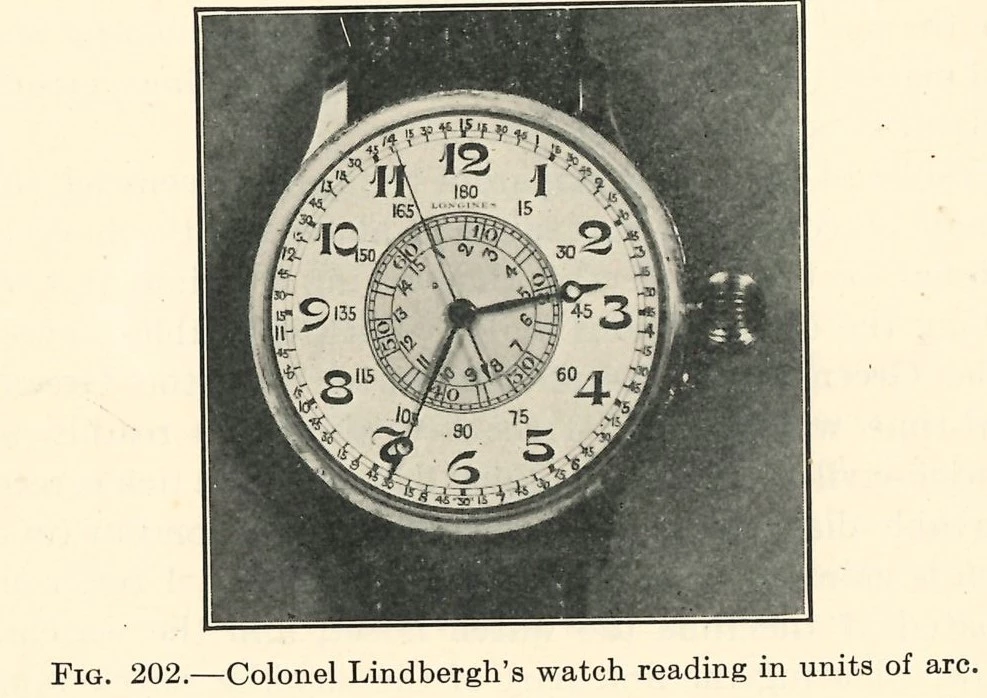
Longines delivered three incredible hour-angle prototypes with unit of arc calibrations. The first creation used a Weems watch with unit of arc calibrations marked up by hand on the dial mirroring an aircraft calotte that was marked up for Lindbergh by P.V.H Weems.

The other two unique aviation instruments were fitted with turning bezels featuring enamel numbered calibrations. These two pieces are the world’s first turning bezel wristwatches by any maker.
One of the bezels marked with green and black enamel work mirrored the production watch introduced in December 1931 and the other red and green. These two pieces had thin bezels with their scales closer to the glass. Both pieces had metal hand painted Weems / hour angle hybrid dials and hand carved inner chapters.

The bezel version of Lindbergh’s ‘Lucy’ Hour angle was most likely hand modified by Longines and Wittnauer technicians. Heinmuller noted in a letter to Lindbergh on June 5, 1930 “the special watch you designed is now ready. Lt Weems impressed with the design. Make appointment to see sample”. [1]
Within the first edition of Weems Air Navigation book, the author discusses Lindbergh’s Aerochronometer and the movable bezel, noting that Longines and Wittnauer were already working on a turning bezel to accommodate the units of arc measurements that Lindbergh’s “Lucy” had on the dial.
Discussing Lindbergh’s Hour-angle prototype, Weems noted “..in order to set the proper equation of time on the watch without moving the hour and minute hands, a moveable bezel working on the same principle as the second-setting feature of the aerochronmeter is fitted to the watch. The markings on the movable bezel are in degrees and units of arc only. This bezel, or ring, covers the marks for reading time on the watch in the usual way.”[2]
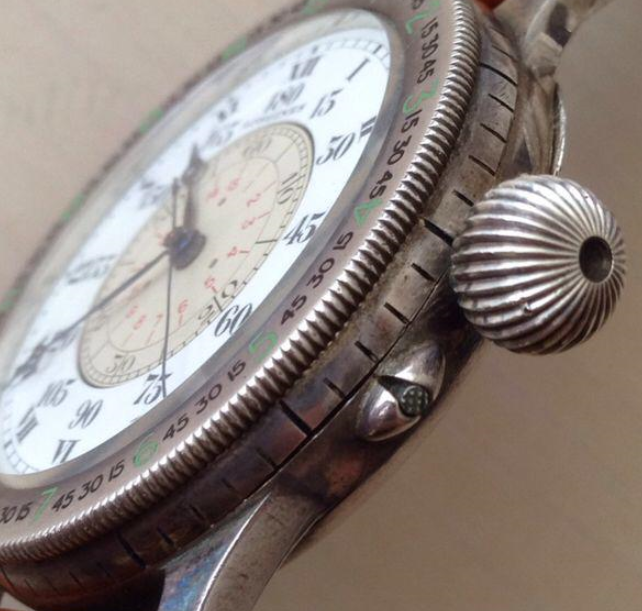
It is known that Heinmuller met Lindbergh shortly after he broke the US transcontinental speed record from Los Angeles to New York on April 20, 1930.
In a letter to his wife, he wrote “…I was privileged to work out details of his latest instruments with him as the enclosed design from him will show. Keep it for our records. His latest ideas incorporate a second setting device for Greenwich Time, taken from the radio. The device… permits laying down of a position in less than three minutes. Navy experts at Annapolis say it is the most outstanding aviation improvement in many years”.[3]
The world’s first turning calibrated rotating bezel wristwatches were the Longines prototype Hour-angle wristwatches. They came into existence in late 1930 and the first parts of 1931. “We have finished the special navigator watch with moveable bezel”[4].
Longines sent photographs of the edited watch to Lindbergh in a world with traditional communication systems. Lindbergh commented he was examining the production watch in a letter to Heinmuller in February 1931, and again on its perfect timing a few months later in July. A World Intellectual Property Organization patent was approved for history’s most famous pilot watch, the Montres angle-horaire, on October 1, 1931 and the first production pieces were delivered in December 1931.
These three incredible prototypes are without doubt history’s most important pilot watches. We know that at least two of these three prototypes were personally used by Lindbergh, and all were capable of calculating longitude. Multiple more firsts for Longines.
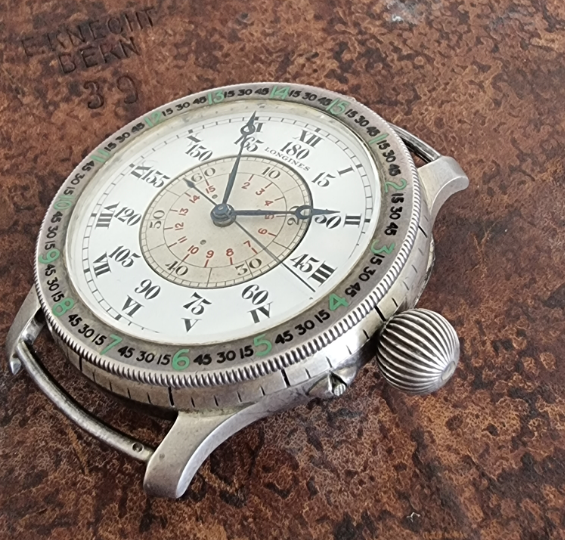
Weems US Patent 2008734 was approved on July 23, 1935, making no reference to an external bezel in any of the ten illustrations, nor in the supporting patent literature.
Weems had been dealing with Baume on the development of other New second-setting watch models in September 1936. Baume submitted a list of technical improvements noted by Weems to Longines with their reply noting, “What he is suggesting has already been accomplished in a slightly different manner. Instead of the break lever working on the lug, which seems very practical, we have designed for stoppage to be enacted via a small additional crown at 4 o’clock, but which could also be placed elsewhere, at 2 o’clock, or on the other side of the lugs at 8,9 or 10 o’clock”. [5]
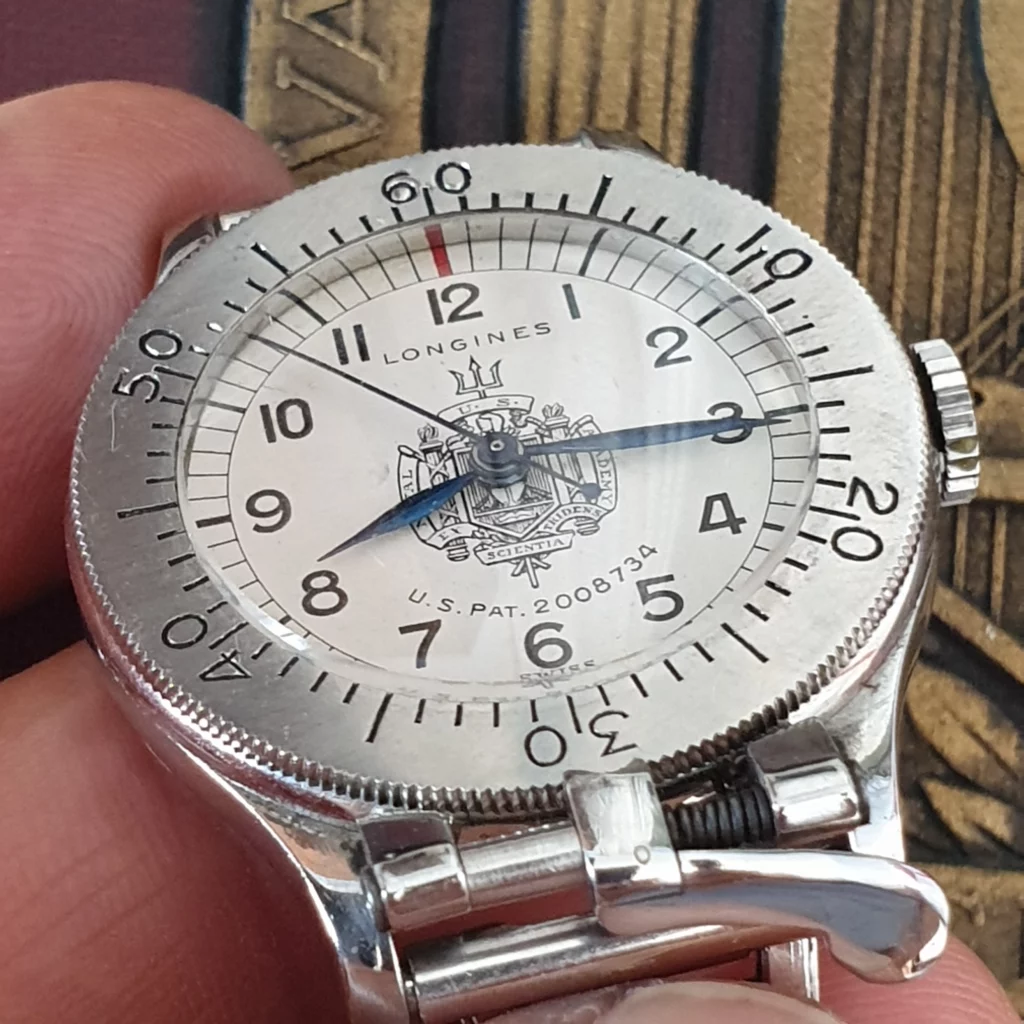
Longines used the word New Second setting watch to describe the smaller cased version where an external bezel was used to make allowances for regulation of the second hand. Literature from this time points to nickel silver prototype samples of other New second-setting watch versions with a turning bezel being sent to Baume in London for Weems to inspect in late 1936.
Longines already featured the ref 3931 in 1935 catalogues and this model was only ever made by Longines alongside the equally rare ref 3930. These models were replaced by the 4036 and later again by the slightly larger 4630 references. Other manufacturer’s versions of the Weems model likely started to appear somewhere around 1938. The Longines ref 4630, with a 34mm all steel case was made for civilian, and military use. Pieces with UK military specifications were delivered in 1940 and also made by Zenith, Movado, Jaeger Le Coultre and Omega.
Therefore, Longines has multiple claims to being first, second and third in the manufacture of wristwatches with calibrated turning bezels.
The world’s very first turning calibrated bezel watch is the Lindbergh Hour-angle watch and the very first example was completed by Longines on November 18, 1929. It was delivered as a large Weems a few months later in the first part of 1930. It was later retrofitted with a rotating bezel by late 1930, early 1931. Both Hour-angle prototypes take the checkered flag by a year odd on the delivery of the so-called production hour angle model. Further, the New-second setting Longines Weems model prototype modified by Henry Hughes and delivered in 1932, along with other multiple references take the remainder of rankings.
The first sample Weems in a silver case with a turning bezel, resembled ref 4037, was originally made by Longines on December 28, 1931. It was supplied to Wittnauer in February 1932 and later modified with a thumb lock by Harry Nash for Henry Hughes and Son in London. Other Longines Weems references ref 3931 (1935) and 3930 took third and fourth places. In 1937, the Rolex Zerograph model followed these Longines turning bezel executions.
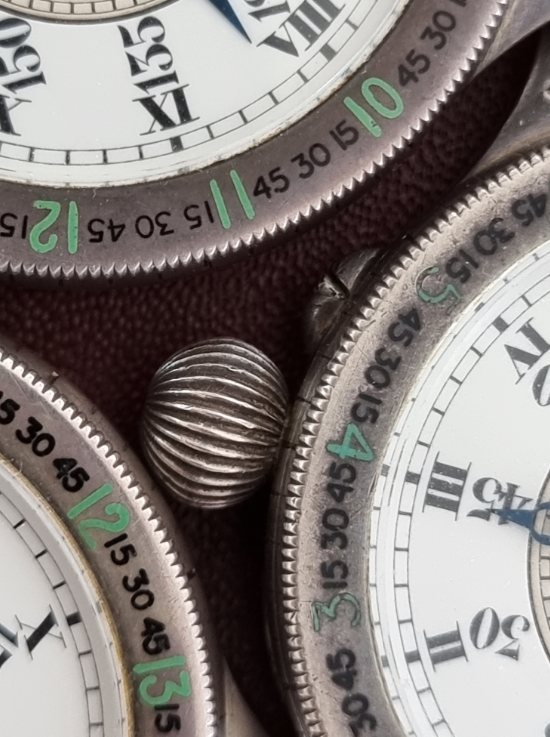
The turning bezel issue was first discussed in Weems Air Navigation book first edition, published in September 1931. Recent discoveries by the author have unearthed the world’s first Hour-angle prototype watches. These pieces help paint an incredible chapter in the development and evolution of the turning bezel and history’s most important pilot watches.
Further testing, alterations and improvements to these pieces allowed a Swiss patent request to be filed on the 29 September 1931 for the Montres angle-horaire. It received approval two days later on October 1, with the first known sales and deliveries in late 1931.
The Longines 47mm Lindbergh Hour-angle model is the world’s first calibrated turning bezel watch and precedes all other watches from all makers. It also runs second, with other Longines weems watches filling the medal space.
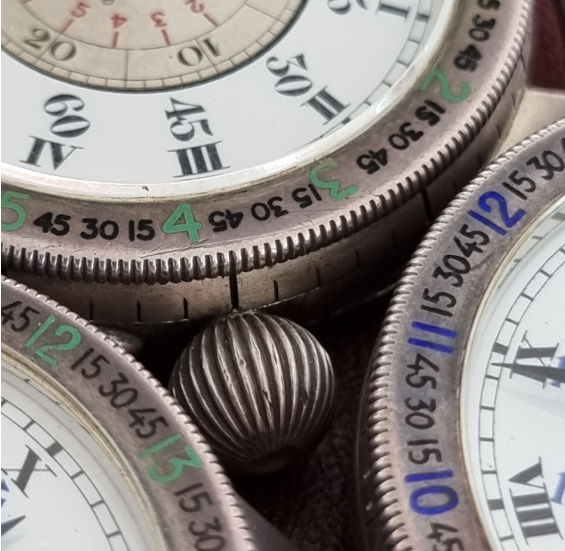
[1] Longines through Time The story of the Watch Stephanie Lachat p116
[2] Air Navigation P.V.H Weems 1931 first edition p411.
[3] Man’s Fight to Fly John P.V. Heinmuller p75
[4] Longines through Time The story of the Watch Stephanie Lachat p116
[5] Longines through Time The story of the Watch Stephanie Lachat p116
